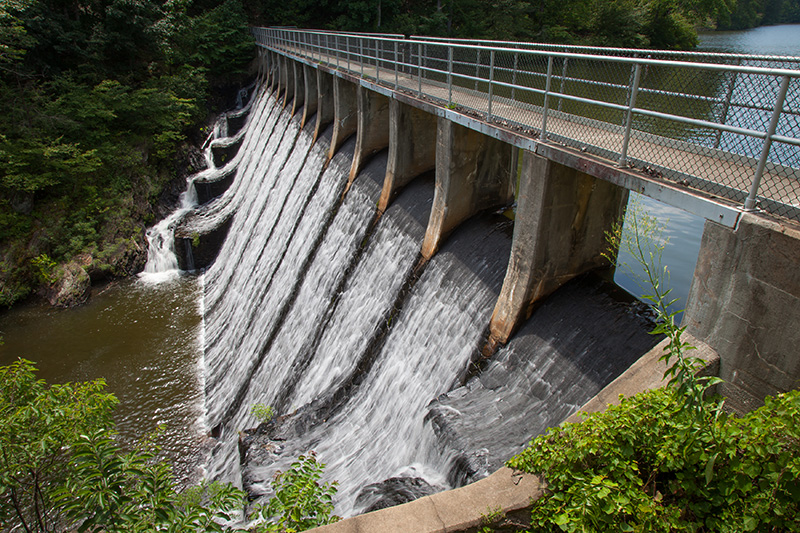
 Department of Conservation and Recreation
Department of Conservation and Recreation
Conserve. Protect. Enjoy.
 Department of Conservation and Recreation
Department of Conservation and Recreation
By Rebecca JonesPosted May 27, 2025
This article was originally published May 27, 2022.
Dams are engineering wonders — workhorses that shore up clean water supplies, help irrigate crops and produce clean energy. But when they fail, they can cause sudden, catastrophic flooding.

The dam at Holliday Lake State Park in Appomattox
May 31 Dam Safety Awareness Day — a perfect time to take a moment to understand the flood risk associated with dam failures and take actions that increase safety.
Here are 7 things you need to know on Dam Safety Day. And, really, every day.
1. May 31 is Dam Safety Awareness Day for a reason. National Dam Safety Awareness Day memorializes the South Fork Dam failure in Johnstown, Pennsylvania on May 31, 1889. It was the worst dam-related disaster in U.S. history and cost more than 2,200 lives.
2. You’re probably close to a dam right now. Since dams serve so many functions, it makes sense that they’re … everywhere. DCR regulates more than 2,500 dams in Virginia. The majority are privately owned.
3. Almost every lake in Virginia has a dam. Mountain Lake in Giles County and Lake Drummond near Norfolk are the state’s only naturally formed lakes. The rest are man made — and that means they have dams.
4. It’s pretty easy to locate dams in your area. You can view your flood risk and local dams in the Virginia Flood Risk Information System (VFRIS). The Army Corps of Engineers National Inventory of Dams has a cool dam-finding tool, too.
5. The average Virginia dam was built back in the 1950s. As the Associated Press has reported, aging dams are an issue across the U.S. This is true in Virginia, as well, where the average dam is 76 years old. The administration has prioritized addressing deficient dams in Virginia.
6. If you live in a dam-break inundation zone, you need flood insurance. Standard homeowners policies don’t cover damage from floods, but homeowners and renters can get flood insurance through the National Flood Insurance Program. An inch of water can cause $25,000 in damages, so it’s worth looking into flood insurance.
7. DCR is the agency to contact if you have a concern about a dam. Click here to download a map depicting Virginia's dam safety regions and contact information. You can also contact DCR's Dam Safety Program staff at 804-371-6095 or email dam@dcr.virginia.gov.
Senior PR & Marketing Specialist Matthew Sabas contributed to this post.
Categories
Dam Safety and Floodplains
Tags
dams | flood control

